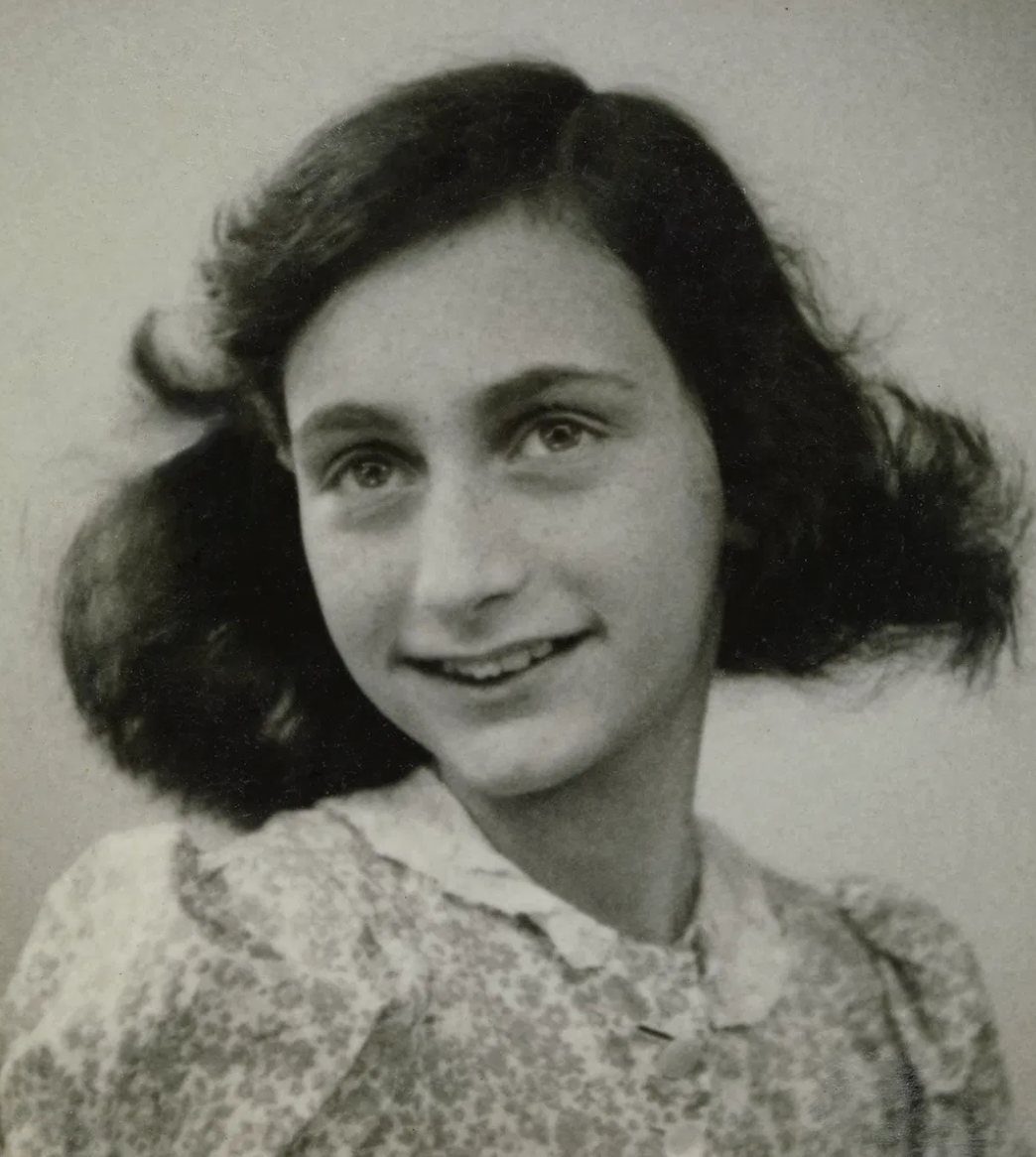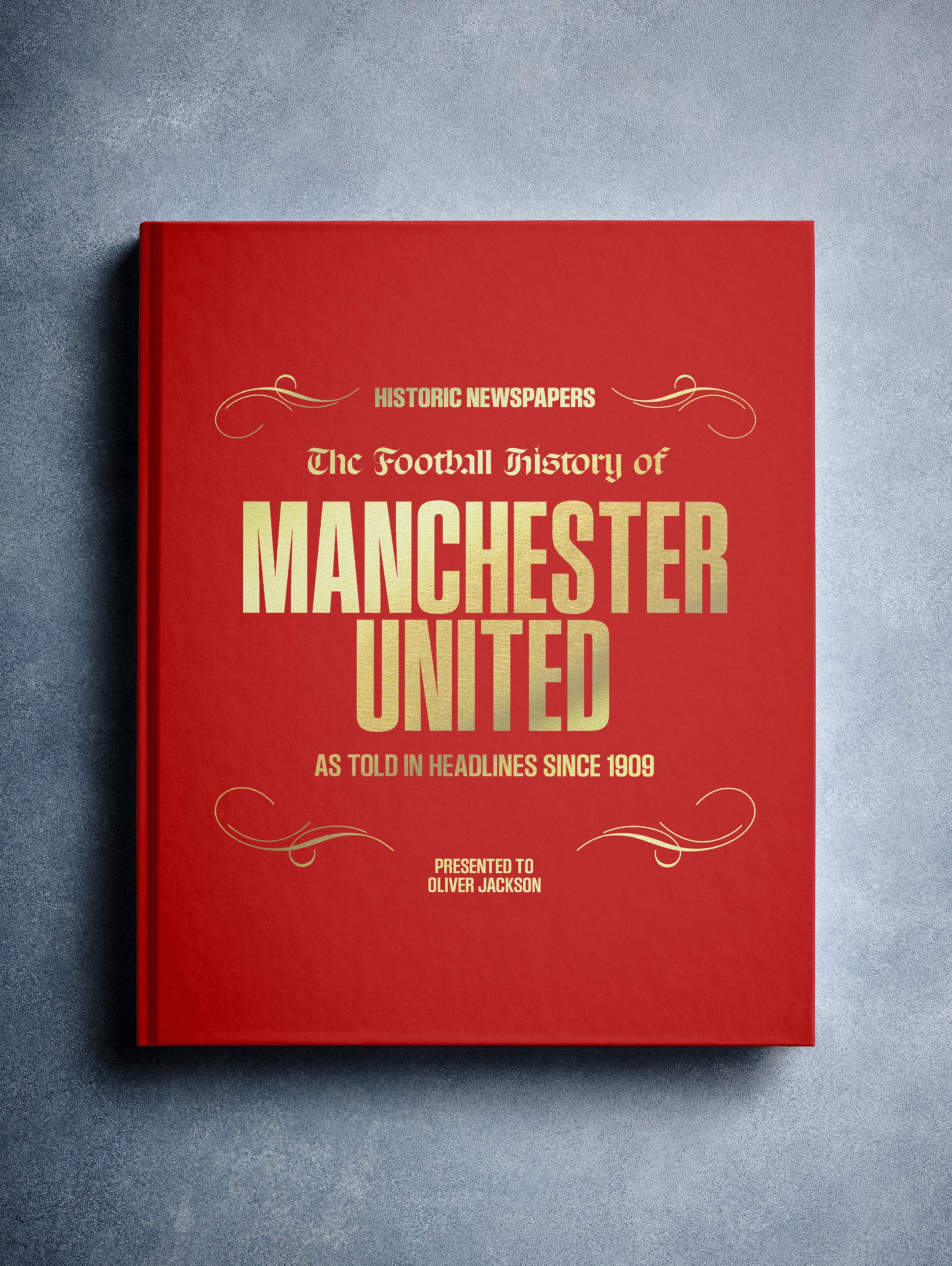FROM the beaches of Normandy to the skies over London, 1944 was a year of major turning points in the Second World War. The Allied D-Day landings in June opened a Western front in Europe, while Soviet forces advanced from the east, liberating cities and weakening German control. In the Pacific, the Americans pressed forward with key victories in Saipan and the Philippines.
At home in Britain, the government passed the Butler Education Act, transforming the school system for generations to come. Meanwhile, a new threat appeared with the launch of V-1 flying bombs, striking London and southern England with devastating force.
This timeline takes you through some of the biggest events of the year that shaped headlines and changed the course of history. You can also explore our archive of 1944 newspapers to discover what the world was reading at the time.
January
January 4: The Battle of Monte Cassino begins in Italy as Allied forces attempt to break through German defences at the Gustav Line. The mountainous terrain and fortified positions make it a difficult and prolonged campaign.
January 7: Author Fay Weldon is born in Birmingham. She would go on to write sharp, satirical novels exploring gender and society, including The Life and Loves of a She-Devil.
January 11: The British Ministry of Food tightens meat rationing, adding sausages and offal to the controlled list. Households are encouraged to rely more heavily on vegetables and tinned goods.
January 17: Soviet troops launch a major offensive around Leningrad, pushing German forces back and lifting the city’s siege after nearly 900 days. The victory boosts morale across the Eastern Front.
January 18: The Metropolitan Opera broadcasts a full-length opera, Tosca, on American television for the first time, reaching thousands of viewers and expanding wartime cultural access.
January 22: Allied troops land at Anzio, south of Rome, in an effort to outflank German positions and advance towards the Italian capital. Initial progress is slow, and fighting becomes entrenched.
January 25: The Daily Mail reports a wartime rise in births across Britain, noting strains on maternity services and a changing post-war demographic outlook.
January 30: Churchill delivers a broadcast reaffirming Britain’s commitment to total victory and warns of difficult months ahead as preparations begin for a new Allied offensive in Europe.
February
February 1: The Butler Education Act receives Royal Assent in the UK. It introduces free secondary education for all and restructures schools into grammar, secondary modern, and technical types, laying the foundation for post-war educational reform.
February 3: Florence LaRue is born in Pennsylvania. She would become a founding member of The 5th Dimension, known for blending pop, soul, and Broadway styles during the 1960s and 70s.
February 4: US Marines launch a major assault on the Japanese-held island of Kwajalein in the Marshall Islands. After intense fighting, the atoll is secured, marking a key victory in the central Pacific campaign.
February 8: Charles de Gaulle declares the formation of a Provisional Government of the French Republic in Algiers, asserting Free French leadership as Allied forces move closer to liberating France.
February 14: Lady Nancy Astor, the first woman to sit in the House of Commons, formally retires from politics after 25 years. Her departure prompts debate over women’s future role in British government.
February 15: The Abbey of Monte Cassino is heavily bombed by Allied forces. The ancient monastery, mistaken for a German observation post, is reduced to ruins, drawing condemnation from the Vatican and cultural historians.
February 18: Operation Hailstone is launched by the US Navy in the Pacific, with carrier-based aircraft striking the Japanese base at Truk Lagoon. The attack cripples Japan’s naval operations in the region.
February 22: Allied bombers mistakenly strike the Dutch city of Nijmegen, causing over 800 civilian deaths in one of the worst friendly fire incidents of the war in Western Europe.
February 28: Glasgow’s shipbuilding industry announces a record number of vessels built or repaired in the previous year, underlining the critical role of Scottish industry in the war effort.
Shop our WWII book to learn more through newspaper history...

March
March 1: Roger Daltrey is born in Hammersmith, London. He would become the lead singer of The Who, one of the most influential British rock bands of the 20th century.
March 3: RAF Bomber Command carries out a major raid on Berlin involving over 500 aircraft. Though the damage is significant, Allied losses are heavy, and debates continue over the strategy of city bombing.
March 6: Soviet forces launch a major offensive in Ukraine, liberating towns along the Dnieper River and pushing back the German Army Group South in a turning point on the Eastern Front.
March 9: Japan carries out a military coup in French Indochina, dissolving the Vichy administration and establishing full control, paving the way for the short-lived Empire of Vietnam.
March 12: The US Army unveils a new poster campaign aimed at discouraging gossip, highlighting concerns over espionage and the importance of maintaining military secrecy.
March 17: Mount Vesuvius erupts in southern Italy, covering surrounding towns with ash and damaging several Allied aircraft stationed near Naples. No major casualties are reported.

Mount Vesuvius. Image: Wikipedia
March 19: Nazi Germany occupies Hungary after its government shows signs of negotiating a separate peace. This leads to the rapid deportation of hundreds of thousands of Hungarian Jews to Auschwitz.
March 22: The British government announces plans for post-war housing reconstruction, citing the need to replace more than half a million homes destroyed or damaged during the Blitz.
March 28: Foreign Secretary Anthony Eden tells the House of Commons that the United Nations concept is gaining support among Allied governments, setting the stage for post-war international cooperation.
April
April 3: RAF bombers strike German shipyards and U-boat facilities in Kiel in a coordinated daylight raid, aiming to disrupt naval production ahead of the expected Allied invasion of France.
April 5: Actor Craig T. Nelson is born in Spokane, Washington. He would later star in Coach, Parenthood, and provide the voice for Mr Incredible in Pixar’s The Incredibles.
April 6: Soviet troops enter northern Romania during the Uman-Botoșani Offensive, widening the Red Army’s reach into Eastern Europe and increasing pressure on Axis-aligned governments.
April 11: British Mosquito bombers carry out a precision raid on Gestapo headquarters in Copenhagen. Danish prisoners are freed, and intelligence files destroyed with minimal civilian casualties.
April 13: War artist Laura Knight’s painting Ruby Loftus Screwing a Breech Ring is unveiled in London. The image of a young female munitions worker becomes a symbol of women’s contributions to the war effort.
April 16: American war correspondent Ernie Pyle publishes reports from Anzio detailing the brutal realities of frontline life, gaining respect from troops and readers alike.
April 19: The London Philharmonic Orchestra performs in bomb-damaged venues across the capital to boost morale during the Easter period, drawing large and emotional crowds.
April 24: Scientists at Los Alamos begin assembling the components for the first atomic bomb under the direction of Robert Oppenheimer. Security around the Manhattan Project tightens further.

Robert Oppenheimer. Image: Wikipedia
April 30: The British Medical Association announces a post-war health plan proposal, laying groundwork for a national health system that would eventually become the NHS.
May
May 1: The British government announces an expanded war pension scheme for disabled veterans and dependents, addressing growing calls for improved post-war care.
May 5: British-born actress Jacqueline Bisset is born in Weybridge, Surrey. She would go on to achieve international fame in films such as Bullitt and Day for Night.
May 6: Allied bombers launch heavy raids on German industrial centres in Leipzig and Brunswick, targeting aircraft and tank factories ahead of the Normandy invasion.
May 8: The Red Army captures Sevastopol after intense fighting in the Crimean Peninsula, pushing German troops out and reclaiming control of the region.
May 12: German forces in Crimea surrender to the Soviets, resulting in over 60,000 prisoners. This marks the end of Axis resistance on the peninsula.
May 15: The BBC celebrates its 21st anniversary with a special radio programme featuring wartime entertainers, including Vera Lynn and Tommy Handley.
May 18: Polish troops fighting with the Allies capture the ruins of Monte Cassino after weeks of fierce combat, opening the road to Rome and boosting Polish morale.
May 23: In preparation for D-Day, American General Dwight D. Eisenhower establishes the Supreme Headquarters Allied Expeditionary Force (SHAEF) in southern England.
May 30: Royal Air Force bombers carry out a massive diversionary raid on German positions near Calais, part of Operation Glimmer designed to confuse enemy defences before the Normandy landings.
June
June 1: The final phase of training for Operation Overlord begins across southern England as thousands of troops and supplies are assembled for the invasion of Nazi-occupied France.
June 4: Allied troops enter Rome after months of gruelling combat in Italy. It becomes the first Axis capital to fall, prompting mass celebrations despite the looming Normandy assault.
June 5: King George VI visits Allied command posts in Portsmouth and meets with British and American troops ahead of the largest amphibious invasion in history.
June 6: D-Day: Allied forces land on the beaches of Normandy in northern France. British, American, and Canadian troops storm Sword, Gold, Juno, Omaha, and Utah beaches in Operation Overlord, establishing a western front against Nazi Germany.
Shop our book to learn more about The Story of the D-Day Landings through newspaper history ...

June 7: Fierce fighting continues in Normandy as Allied troops push inland. British forces advance toward Caen, while American units face heavy resistance around Carentan.
June 10: In reprisal for French Resistance activity, German SS troops massacre 642 civilians in the village of Oradour-sur-Glane. The atrocity becomes a symbol of Nazi brutality.
June 13: Germany launches its first V-1 flying bomb attack on London. Several missiles strike the city, marking the start of a new and terrifying phase of the Blitz.
June 14: Charles de Gaulle arrives in France for the first time since 1940, landing in Normandy to reassert French sovereignty and prepare for political restoration.
June 20: The US Navy captures Saipan in the Mariana Islands after three weeks of intense combat, bringing American bombers within range of the Japanese mainland.
June 25: British forces liberate Villers-Bocage in Normandy, part of a wider push inland as the Allies consolidate their position across northern France.
July
July 1: In Britain, the Ministry of Labour reports that over one million women are now employed in wartime industries, including engineering, aircraft assembly, and munitions, reflecting a major shift in the workforce.
July 3: Soviet forces liberate Minsk, capital of Belarus, during Operation Bagration. The Red Army’s rapid advance begins dismantling German Army Group Centre in one of the war’s most decisive campaigns.
July 6: English tennis player Ann Haydon Jones is born in Birmingham. She would later win Wimbledon in 1969 and become a prominent advocate for women in sport.
July 9: British and Canadian troops capture the city of Caen after prolonged fighting. Its fall is a crucial step in the Normandy campaign and allows for Allied advances toward Paris.
July 12: The Labour Party’s annual conference in London outlines post-war plans for national health insurance, affordable housing, and employment guarantees.
July 17: Field Marshal Erwin Rommel is seriously injured in a strafing attack by RAF Spitfires in Normandy, weakening German command as the Allies push inland.
July 20: A failed bomb plot to assassinate Adolf Hitler is carried out by Claus von Stauffenberg and other Wehrmacht officers. Hitler survives, and brutal reprisals follow across the German officer corps.
July 22: Representatives from 44 Allied nations sign the Bretton Woods Agreement in New Hampshire, establishing a post-war global financial system including the International Monetary Fund and World Bank.
July 25: The US Army launches Operation Cobra, breaking out of Normandy and beginning a rapid advance across northern France.
July 31: Antoine de Saint-Exupéry, author of The Little Prince, disappears during a reconnaissance flight over the Mediterranean. His plane is presumed shot down by a German fighter.
August
August 1: The Warsaw Uprising begins as Polish resistance fighters launch an operation to liberate the capital from German control before the Soviet arrival. The fighting continues for over two months.
August 4: Anne Frank and her family are arrested in Amsterdam by the Gestapo after more than two years in hiding. Her diary would later become one of the most famous accounts of the Holocaust.

Anne Frank. Image: Wikipedia
August 8: British actor John Glover is born in Kingston upon Thames. He would go on to build a career in theatre and television, including roles in Smallville and Batman & Robin.
August 12: In the Pacific, Japanese resistance ends on the island of Guam, which is officially recaptured by US forces after three weeks of combat.
August 15: Operation Dragoon begins as Allied troops land in southern France between Toulon and Cannes. The second front accelerates German withdrawal from occupied territory.
August 19: The French Resistance begins an uprising in Paris, engaging German forces in street battles as Allied troops close in from the west.
August 20: Romania begins peace negotiations with the Allies after Soviet forces cross into the country. The government soon turns against the Axis and declares war on Germany.
August 22: The Red Cross confirms that British nurse Violette Szabo has been executed in a concentration camp. Her bravery in occupied France becomes widely celebrated after the war.
August 25: Paris is liberated by Free French forces under General Leclerc. Charles de Gaulle enters the city to cheering crowds, declaring the restoration of the French Republic.
September
September 3: Brussels is liberated by British and Belgian forces after a rapid advance. Crowds cheer Allied troops as German occupiers retreat, and the city’s infrastructure remains largely intact.
September 5: Soviet troops enter Bulgaria, leading to the collapse of the pro-German regime. A new government quickly aligns with the Allies and declares war on Germany.
September 8: The first German V-2 rocket hits London, landing in Chiswick and killing three people. Unlike the V-1, the V-2 travels faster than the speed of sound and arrives without warning.
September 11: US and British troops link up near Dijon, establishing a continuous front from Normandy to the Swiss border and preparing for a push into Germany.
September 13: American troops enter Germany for the first time, crossing the border near the Siegfried Line and marking the beginning of the campaign into the heart of the Third Reich.
September 15: Japanese forces are defeated in the Battle of Peleliu, though the costly campaign sees high US casualties. The island’s capture is part of the push toward the Philippines.
September 17: Operation Market Garden begins in the Netherlands. British and American airborne forces drop behind enemy lines to capture key bridges, but the operation ultimately fails to take Arnhem.
September 21: The British government announces an expanded demobilisation plan for servicemen and women after the war, including training and job placement programmes.
September 26: French composer Maurice Ravel’s Piano Concerto in G Major is performed in Paris for the first time since the German occupation, symbolising cultural renewal in the liberated capital.
September 30: RAF intelligence reports confirm the effectiveness of radar countermeasures used during the Normandy campaign, crediting British scientists with reducing Luftwaffe bombing accuracy.
October
October 2: The Warsaw Uprising ends after 63 days of fighting. German forces regain control of the city and deport tens of thousands of survivors. The Soviet Army remains on the far side of the Vistula.
October 5: British author and critic Clive Barker is born in Liverpool. He would become a major figure in horror and fantasy fiction, known for works such as Hellraiser and Books of Blood.
October 9: Churchill and Stalin meet in Moscow to discuss post-war influence in Eastern Europe. The “Percentages Agreement” outlines informal spheres of influence in countries like Romania and Greece.
October 13: The Italian government officially declares war on Germany, one year after Mussolini’s fall. Italy is now aligned with the Allies as the fighting continues in the north of the country.
October 14: German Field Marshal Erwin Rommel dies of his wounds, officially reported as from injuries sustained in July, though later revealed to be forced suicide following the failed Hitler assassination plot.
October 17: RAF bombers carry out a precision attack on the Gestapo HQ in Aarhus, Denmark, destroying records and aiding the local resistance.
October 20: US troops liberate Leyte Island in the Philippines. General Douglas MacArthur returns as promised, beginning the campaign to retake the entire archipelago.
October 21: Aachen becomes the first major German city captured by Allied forces. The battle is intense and marks the beginning of heavy fighting inside Germany.
October 23: The Battle of Leyte Gulf begins, becoming the largest naval battle of the Second World War. Japan suffers a devastating loss of ships and aircraft.
October 30: The UK Board of Education publishes a plan to expand post-war secondary school capacity and modernise curricula, anticipating the full rollout of the Butler Act.
November
November 1: The Battle of Walcheren Causeway begins as Canadian and British troops launch amphibious assaults to clear German defences along the Scheldt Estuary, securing supply routes to Antwerp.
November 5: Franklin D. Roosevelt is elected to an unprecedented fourth term as President of the United States, defeating Republican candidate Thomas Dewey amid strong wartime support.
November 7: British field hospitals report a rise in post-traumatic stress cases among returning troops, leading to expanded treatment efforts for “battle exhaustion.”
November 11: King George VI leads Armistice Day commemorations in London. The ceremony at the Cenotaph reflects growing national resolve as victory edges closer.
November 13: The BBC resumes full-length theatrical radio productions, beginning with Shakespeare’s Macbeth, as a sign of cultural resilience.
November 16: RAF bombers carry out a massive raid on Düsseldorf in one of the largest single-night operations of the war. Over 1,000 aircraft participate.
November 20: The Nuremberg Palace of Justice is selected as the future site of war crimes trials, though proceedings will not begin until the following year.

The Nuremberg Palace of Justice. Image: Wikipedia
November 25: American forces take control of Peleliu Airfield after prolonged fighting. Japanese resistance on the island continues in isolated pockets.
November 29: The British government announces a post-war housing reconstruction fund to support the rapid building of affordable homes after demobilisation.
December
December 3: Street fighting breaks out in Athens between British troops and Greek communist forces (ELAS), marking the start of the Dekemvriana. The clashes reflect growing tension in post-occupation Greece.
December 5: British cryptanalysts at Bletchley Park report continued success in breaking German Enigma ciphers, attributing recent gains to captured codebooks from a U-boat seized in October.
December 10: The Home Guard stands down after four years of service. Thousands of volunteers are formally thanked in local ceremonies across Britain.
December 16: Germany launches the Ardennes Offensive, also known as the Battle of the Bulge. In surprise winter conditions, German forces push into Belgium and Luxembourg, leading to some of the fiercest fighting on the Western Front.
December 18: The Royal Family visits bomb-damaged areas of London’s East End, where Queen Elizabeth thanks community workers and volunteers for their endurance.
December 20: American troops hold Bastogne under siege during the Ardennes Offensive. General McAuliffe famously responds “Nuts!” to a German surrender demand.
December 24: British and Canadian air forces carry out a Christmas Eve bombing raid on German rail junctions, aiming to disrupt enemy logistics during the Ardennes campaign.
December 26: The US 4th Armored Division breaks through to relieve Bastogne, ending the German siege and reversing the initial gains of the Ardennes Offensive.
December 31: Churchill addresses the nation in a New Year’s Eve broadcast, expressing gratitude for Allied advances and optimism for final victory in 1945.
D-Day Landings in Normandy
6 JUNE, 1944 was a pivotal moment in the Second World War, as Allied forces launched the largest amphibious invasion in history on the coast of Normandy. Operation Overlord involved more than 150,000 troops from the United Kingdom, the United States, Canada, and other Allied nations landing across five beaches: Utah, Omaha, Gold, Juno, and Sword. The assault was supported by over 5,000 ships and 11,000 aircraft, aiming to establish a Western front and begin the liberation of Nazi-occupied Europe. British and Canadian forces advanced toward Caen, while American units faced strong German resistance at Omaha Beach. The successful landings marked the beginning of the end for Nazi Germany, enabling the Allies to move inland, liberate Paris by August, and advance toward the German border by the end of the year.
The Butler Education Act
THE Education Act of 1944, commonly referred to as the Butler Act after Conservative politician R. A. Butler, introduced comprehensive reforms to the British education system. Passed during wartime but designed with post-war society in mind, the Act made secondary education free for all pupils and established a new tripartite system, dividing schools into grammar, secondary modern, and technical categories. It also raised the school leaving age to 15 and laid the groundwork for later increases. The Act aimed to provide equal educational opportunity regardless of social class, recognising the importance of education in rebuilding Britain after the war. Although some aspects, such as the full implementation of the tripartite system, faced criticism and evolved in later decades, the Butler Act became a cornerstone of British social reform and marked a shift towards state responsibility in education.
V-1 Flying Bomb Attacks on Britain
ON 13 JUNE, 1944, the first German V-1 flying bomb struck London, landing in the Bow area and killing six people. The V-1, or “buzz bomb,” was a pilotless jet-propelled missile launched from occupied northern France. These weapons, part of Germany’s so-called “Vengeance” programme, targeted civilian areas in an attempt to demoralise the British public following the Normandy invasion. Over 9,500 V-1 bombs were launched at Britain between June and September 1944, killing more than 6,000 people and injuring thousands. The attacks caused widespread destruction across London and the South East, leading to the redeployment of anti-aircraft guns and the use of fast RAF fighter planes to intercept the missiles mid-air. The campaign was followed later that year by the launch of the V-2 rocket, the world’s first long-range guided ballistic missile, which introduced a new and more terrifying threat to civilian life.



























Follow us